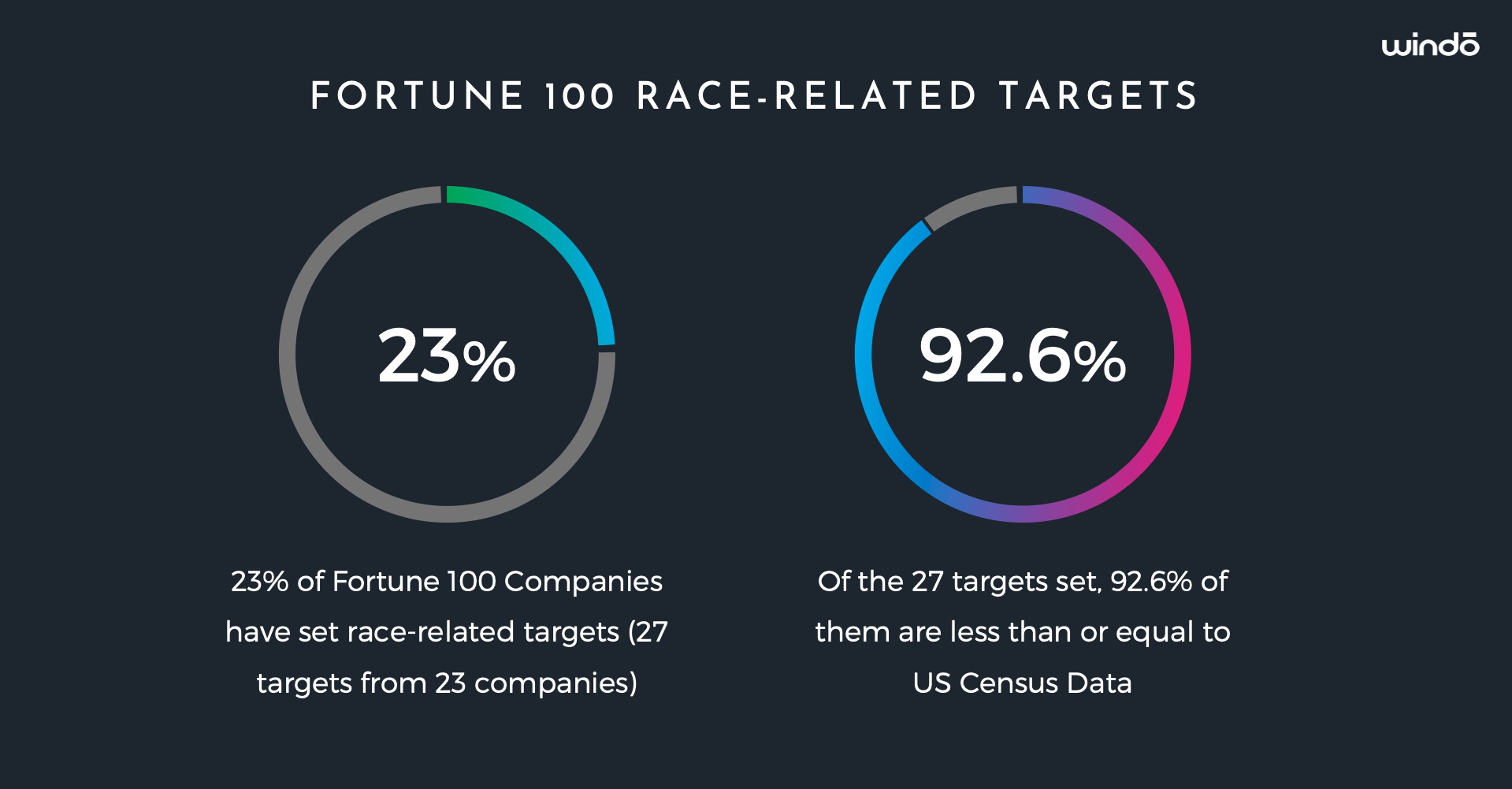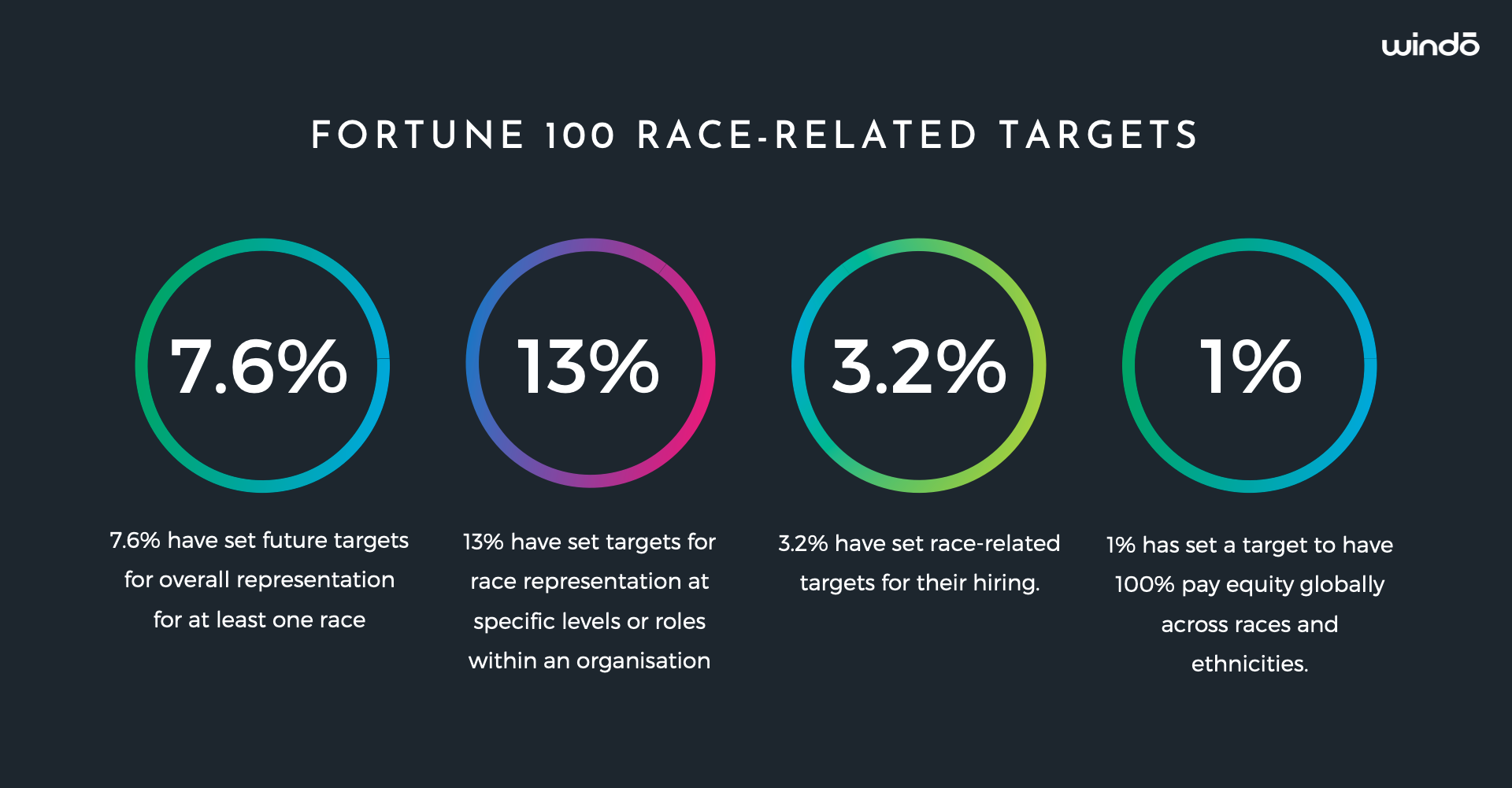Race-Related Targets at Fortune 100 Companies
On July 13th 2023, attorneys general for 13 US states wrote and signed a letter to Fortune 100 CEOs warning them that setting race-related targets for workforce representation and supplier spend is “illegal” and that they would “vigorously” seek legal action against employers with such practices.
At Windō we happen to hold the diversity, equality and inclusion data of every company in the Fortune 100 so we thought it would be helpful to share some facts on this topic. So here we go…
- 23% of Fortune 100 companies share race-related targets.
- Gender-conscious or race-conscious hiring practices are permitted under Title VII of the Civil Rights Act as long as there is no “undue harm” on members of non-targeted groups.
- For those 23% of Fortune 100 companies that set race-related workforce targets, 92.6% are less than or equal to the proportion of that race in the United States based on US Census Data; these companies are therefore merely looking for their companies to represent the customers and communities they serve.

For a more granular breakdown…
69.5% publicly report their workforce race representation. This isn’t of concern to the Attorneys General but it’s relevant because companies are unlikely to set targets if they don’t share where they are at today.
23% of Fortune 100 companies have set race-based targets (this includes targets for race within overall representation, at specific levels within the organisation, in recruitment and in pay equity).

7.6% have set future targets for overall representation for at least one race (Asian, Black, Hispanic or more broadly People of Colour). Eg. Google have set a target to double their overall black representation by 2025, from 5.6% in 2022 to 11.2% (12.6% of the US Population is Black)
13% have set targets for race representation at specific levels or roles within an organisation (Executives, Managers or Leaders for example). Eg. Pepsico have set a 2025 target to have 10% of their Managers to be Hispanic (18.9% of the US Population is Hispanic and Latino).
3.2% have set race-related targets for their hiring. Eg. Best Buy have set a 2025 target for 30% of new hires to be black, latinx or indigenous (32.4% of the US Population are Hispanic and Latino, Black or Indigenous).
1% (American Express) has set a target to have 100% pay equity globally across races and ethnicities. A target to be applauded.

You can access the Diversity, Equality and Inclusion profiles of every company in the Fortune 100 (and FTSE 250 and Times Top 100 Graduate Employers) here on Windō.

